You might know dianthus flowers under their more common name – pinks. But that’s certainly not the only color they come in, nor the only variety. In fact, dianthus flowers come in no less than 300 varieties to choose from!
Which is extremely good news for all you green thumbs out there. As is the fact that these little neon-colored beauties are very fragrant and have astonishing foliage that will enchant your garden all year long.
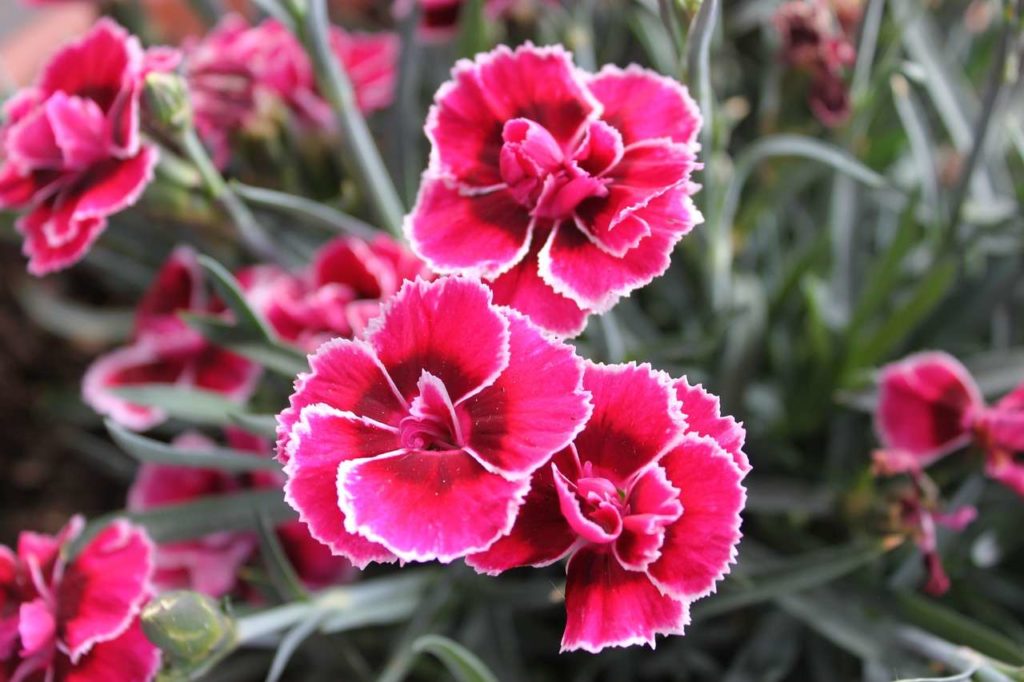
Need more good news? Or reasons to start planting dianthus right now? These quintessential garden flowers are some of the oldest in recorded history. And they house the highly-prized carnation among their ranks.
So, let’s get down to business. We have prepared an exhaustive guide for you on how to grow dianthus flowers, which types are best, how to plant them from seed, and even a thing or two about what they symbolize. All the information on dianthus in one place!
Dianthus Flower Card Information
| Origin | The Mediterranean Region |
| Common name | Pinks, China Pinks |
| Scientific name | Dianthus monspessulanus |
| Rank / Species | Dianthus caryophyllus |
| Family | Caryophyllaceae |
| Genus | Dianthus |
| Height | < 6 inches, 6-12 inches, and 1-3 feet |
| Colors | pink, white, scarlet, red, purple |
Dainthusses bloom depending on the variety. Common dianthus blooms are small and vivid pink in color with frayed edges. Their foliage is bluish-gray in color with long, thin leaves, and very beautiful on its own as a decorative garden hedge.
The colors variety as mentioned above is huge and the bright colors are truly something different, but the most common and well-known might be the famous Black Carantion.
How to Grow Dianthus Flowers
Of course, growing dianthus depends on the type or variety you are planning on having in your garden. The approximately 300 varieties of dianthus flowers in existence differ from very small plants that essentially form garden mats to long and tall carnations.
We have put together a step by step guide which will show you how to grow dianthus flowers and help you out even if you’re a beginner!
Growing Dianthus from Seed
When growing dianthus flowers from seed, it’s important to understand which type of flowers you have because the growing process is different. Therefore, let’s break them into categories.
1. Growing indoor dianthus seeds
You will have to plant the dianthus seeds indoors. Otherwise, they won’t bloom in the first year. Count six or eight weeks before the first period of frost will set in your area. Plant the seeds in trays indoors.
If you have perennial seeds, then you will notice them germinating some three weeks after you have planted them. If you have annual seeds, then they will germinate even faster.
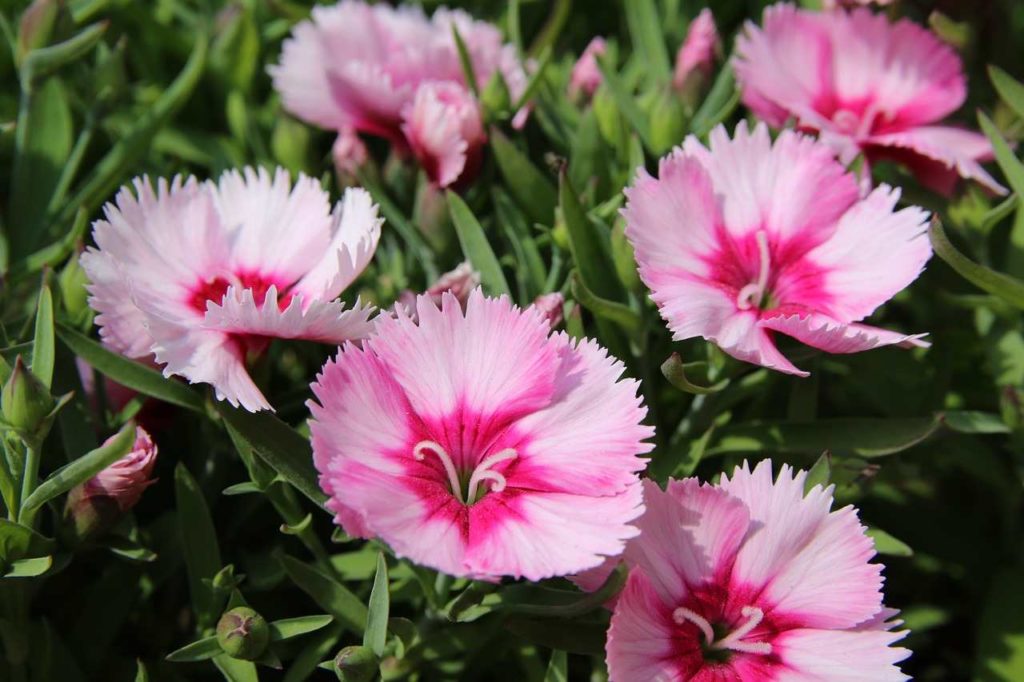
Transport your seedlings outside only when the last frost hits. They can tolerate a bit of cold.
If everything goes according to plan, indoor dianthus seeds will bloom approximately four weeks after you have started this process.
2. Growing outdoor dianthus seeds
Once again, professional gardeners break this category down into perennials and annuals.
Perennial dianthus seeds grown outdoors will not blooms during their first year. You will only see dianthus flowers next summer after planting.
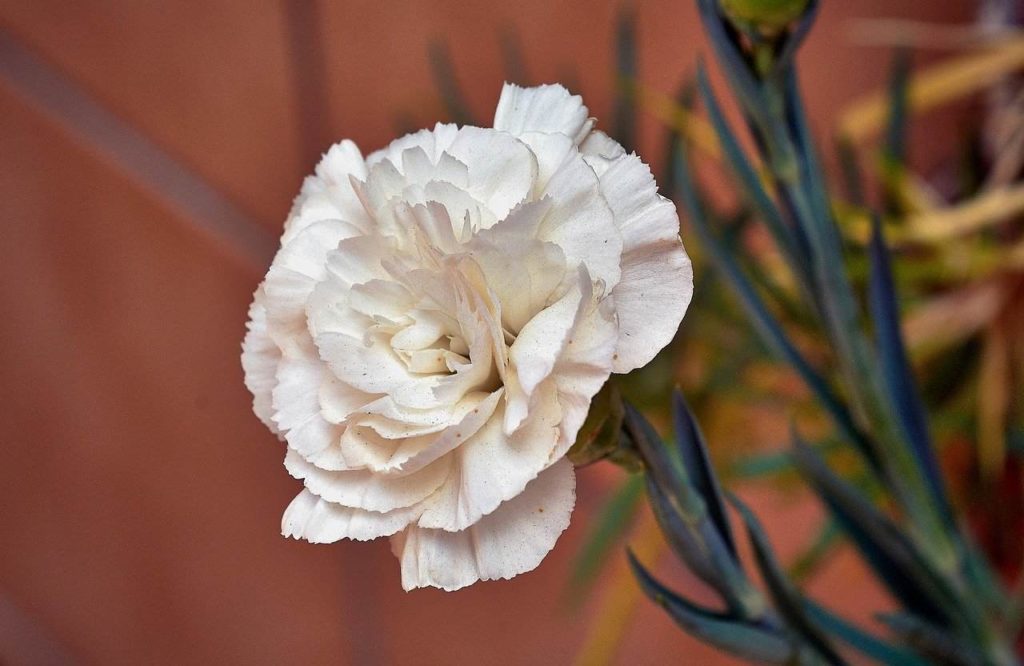
Annual dianthus seeds that you plant outdoors will bloom in as little as three months. This is why you have to pay close attention to the variety of dianthus flowers you want to plant in your garden.
Start by planting the seeds in springtime, right after the last frost. Cover the planted seeds with compost or a light layer of soil.
Water them on a regular basis until you can see that the seeds have started to germinate. The flowers will bloom from early summer through fall.
Best Dianthus Seeds
Since we have already mentioned how important it is to choose the right type of seeds for your garden, let’s see which of these categories of seeds are the best.
- Grenadin Snow White – A type of carnation that produces very big double blooms which are almost impeccably white.
- Dianthus Superbus Spooky – a fun variety that has very long petaled blooms and which will surely delight you. The flowers give off a superb smell day and night.
- Dianthus superbus alba – the name translates to superb white but, apart from their gorgeous aesthetic, what you will love the most is just how easy they are to grow!
- Newport Pink – out of all the dianthus varieties on our list, these are the ones you are most likely to recognize. Developed in the 1920s, Newport Pinks are retro and famous enough that you have probably seen them in your grandma’s garden!
- Dianthus barbatus ‘Scarlet Beauty’ – gardeners love this variety because it produces very brightly colored blood-red blooms that also smell incredibly rich.
Dianthus Care
Experienced gardeners love to deadhead dianthus flowers for two main reasons. So that the dianthus flowers rebloom more easily and to improve the appearance of the flowers themselves and of the garden.
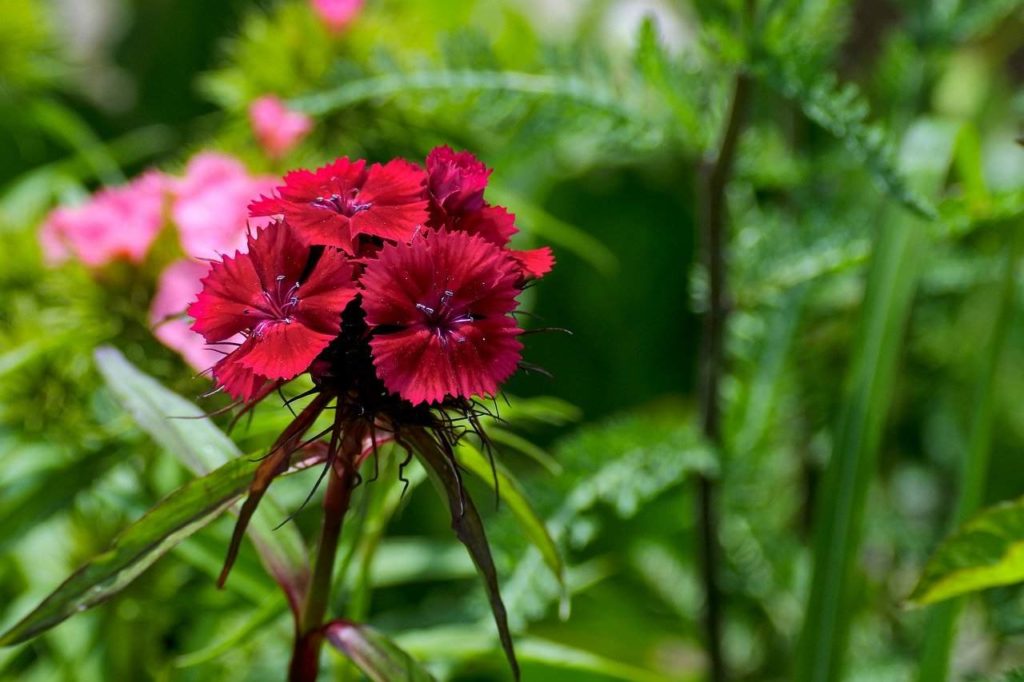
How to Deadhead Dianthus Flowers
ere are the steps you need to follow to deadhead dianthus flowers.
- Always use pruning shears when deadheading these flowers.
- Exercise as much caution as possible when deadheading because the flowers bloom in several spots on the same stem.
- The best time to deadhead dianthus is in midseason.
- Wait until there is a large number of spent flowers to deadhead them rather than doing it one by one seeing as these are such prolific bloomers.
- Always check the stems for new buds. If they are present, using your pruning shears, cut your stem ½ an inch above your bud.
- If you can’t see any new buds, you can cut the stem as low as the first pair of leaves.
- Do not leave any dead stems, foliage, or flowers on the ground. Always pick them up and remove them from your garden in a bag. Garden pests love to breed in dianthus detritus.
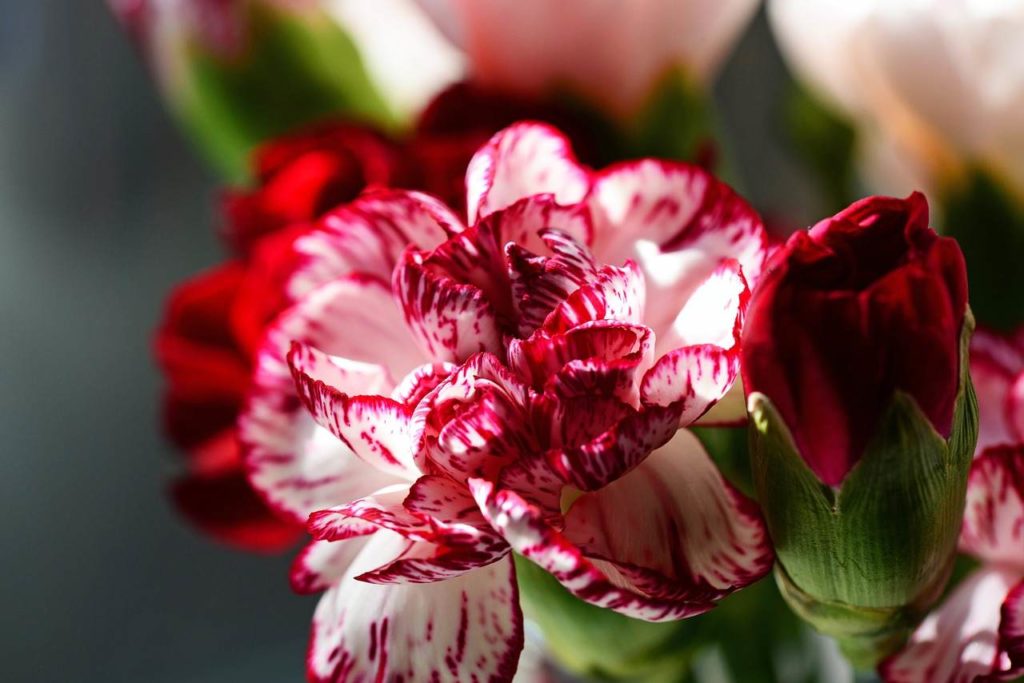
Types of Dianthus Flowers
Judging by the color and shape of their flowers and foliage alone, dianthus flowers are some of the most striking you could ever own. But which ones should you choose out of the 300 varieties in existence? Here are some examples that will help you out.
Cheddar Pink
This is the most common type of dianthus and also the one that gives the flower its common name – pinks.
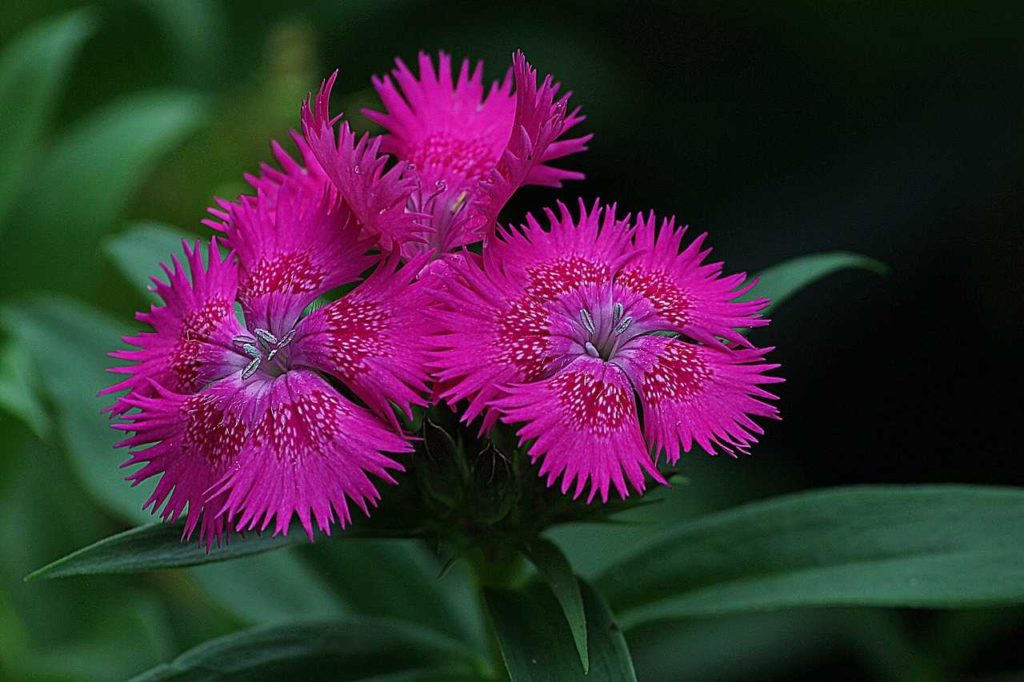
An interesting fact here is that ‘pink’ stands not just for the brilliant, dazzling pink color these showy flowers have but for something else as well. The small blooms have frayed edges that look as if someone took a set of pinking shears and clipped them.
The flowers also have the traditional smell associated with dianthus. When in full bloom, they give off a rich and warm scent very reminiscent of cloves.
When it comes to growing them, you should know they love well-drained acidic soils and as much sun as they can get. Remember that these pink lovelies grow naturally in the Mediterranean!
Arctic Fire
Once you feast your eyes on these tiny beauties, you will understand why they are called Arctic Fire. This variety of dianthus flowers produces opaque white blooms that have a fire red center. When clustered in a batch, the result is spectacular.
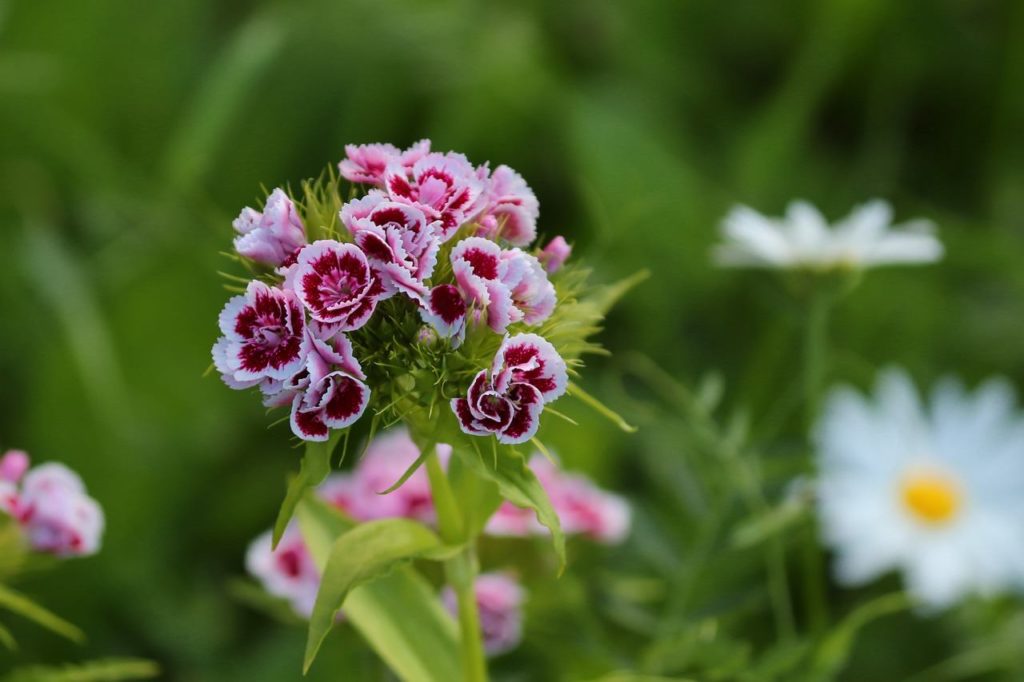
As a plant, this variety is a perennial. They flower within the first year of planting them and they are quite small. However, the great thing about them is that they grow very wide in a type of net or mat that can cover your garden very quickly.
Chabaud Aurora
This variety was developed especially for florists. In other words its purpose is that of a cut flower. This is why the Chabaud Aurora carnation has a very long and slim stem. So that you can use it in flower arrangements, bouquets, and put it in a vase.
As a result, this is a flower that you will have to cut and enjoy inside rather than leave it to wither in the garden. Which is incredibly good news in our book!
The Chabaud Aurora dianthus variety produces large blooms that almost look like roses when they are fully open. The most common and well-loved color is pastel pink which you will fall in love with. But they also come in other pastels, such as coral, pink, salmon, and cherry.
Maiden Pink
This perennial produces very small purple pink flowers that love to decorate walls and rocky areas. So make sure you give them something to climb when you plant them in your garden.
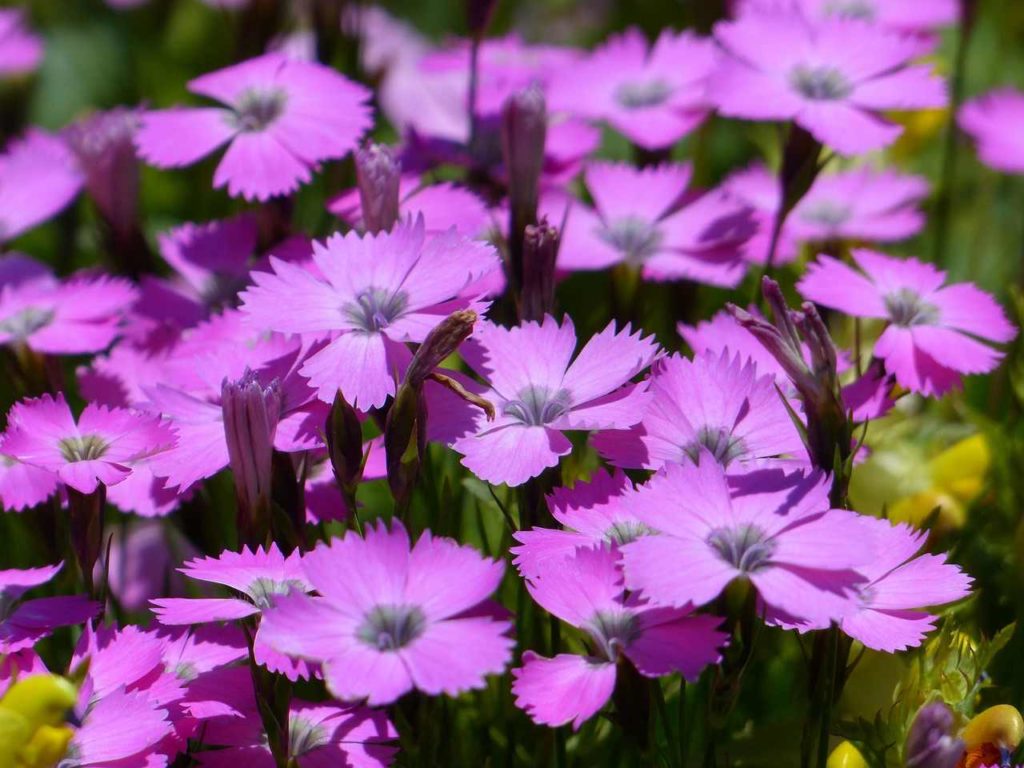
Maiden pink dianthus flowers don’t require a lot of care. The most you need to do is remove dead flowers just like we showed you and allow them space to grow.
A very interesting thing about this variety is that they don’t require any watering. Yes, you read that well. You don’t and shouldn’t, for that matter, water Maiden Pinks. The flowers love heat and dry soil and don’t require any water from you.
The only situation in which you have to help them out a little bit is if your area is going through a prolonged drought and you see the dianthus bushes struggling to flower.
Dianthus japonicus
This variety is also known by the common name of ‘seashore pink.’ Although you might identify them as white with just the smallest trace of blush pink.
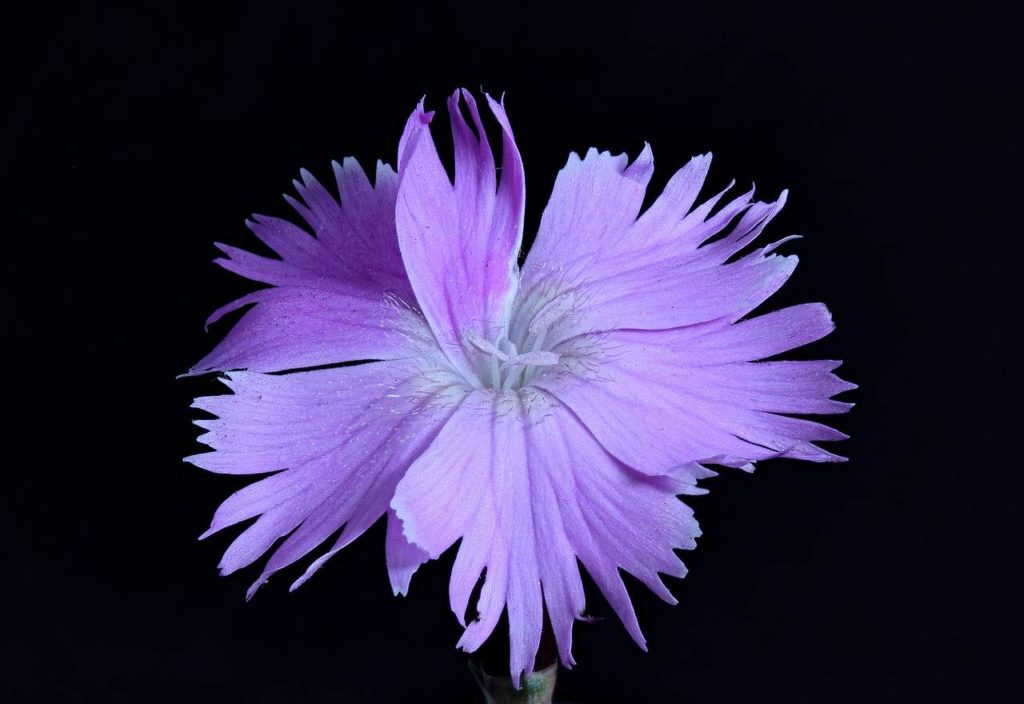
The species has the rich smell of cloves as well, just like its entire floral family. Plus, it attracts bees, which means that you will be contributing to the wildlife.
One of the reasons why the flower is called ‘seashore pink’ is that it absolutely adores to grow at the seaside. As a result, the plant is very tolerant to heat and salt in the air. Therefore, if you live in such a climate and are wondering what flowers are best for your garden, this dianthus is the one for you!
Dianthus Meaning and Symbolism
As already mentioned, given its etymology, dianthus is considered to be a sacred flower or the flower of the gods. This tradition of the dianthus as the flower of Zeus might have started with the Ancient Greeks, but it continued for centuries.
Leonardo da Vinci himself painted the Madonna of the Carnation. In the painting, the Virgin Mary can be seen handing a red dianthus flower to the baby Jesus. It represents a symbol of his future passions of the Christ.
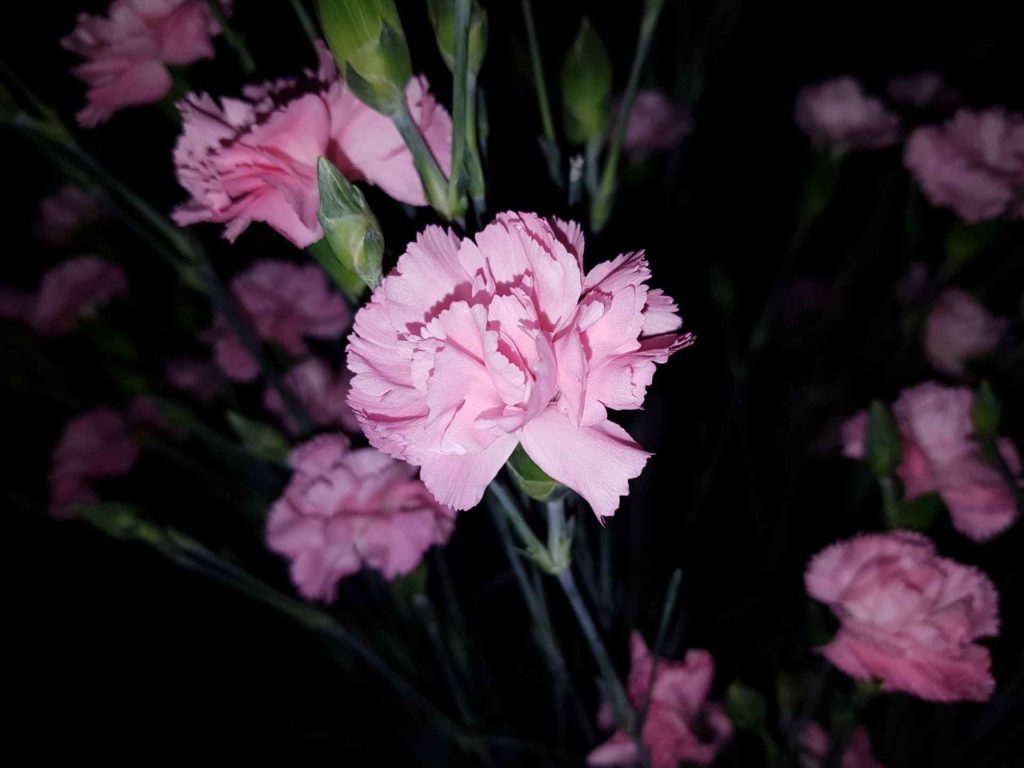
Raphael, another famous painter of the Renaissance painted the Madonna of the Pinks. Both the Virgin Mary and the baby Jesus can be seen holding pink carnations in this version, as a symbol of passion and romance.
Today, the dianthus and its variety the carnation do not retain their religious symbol anymore. However, they do conserve the meaning attributed to these flowers in the Middle Ages. In other words, giving someone a bouquet of either is a symbol of passionate love.
Where Do Dianthus Flowers Come From?
When talking about the origins of the Dianthus flowers, it’s impossible not to mention their beautiful title.
The name ‘dianthus’ is a Greek word derived from dios which stands for ‘god’ and anthos which stands for ‘flower.’ This is why Dianthus is also known as the Flower of the Gods.
When the Ancient Greeks referred to ‘god’ they meant Zeus and that is why dianthus is considered to be the flower of Zeus. Theophrastus, an Ancient Greek botanist makes a mention of Dianthus in one of his works, essentially marking it as one of the oldest flowers in existence.
Dianthus grows naturally in the Balkan Peninsula, in the Mediterranean Region, Asia Minor, and China. As a result, most scholars believe that the Ancient Romans brought it to Europe from Asia. From there it spread on to England and, eventually, to the New World.
A Dazzling Dianthus Color Explosion in Your Garden
There is no doubt that dianthus flowers are the type that need to take center stage at all times. With bright neon colors, lavish blooms that look almost like roses, and rich smells that remind you of cloves, dianthus flowers are a spot of color and happiness in any garden!
Out of all the flowers we love and grow, the dianthus must be among our top favorites, not only for us humans, but also for our busy bee-friends. Of all the diabthus types explained in this post, which dianthus perennial is your favourite flower?
We would love to hear from you in the comments below, so please feel free to share you experience with these dazzling beauties.

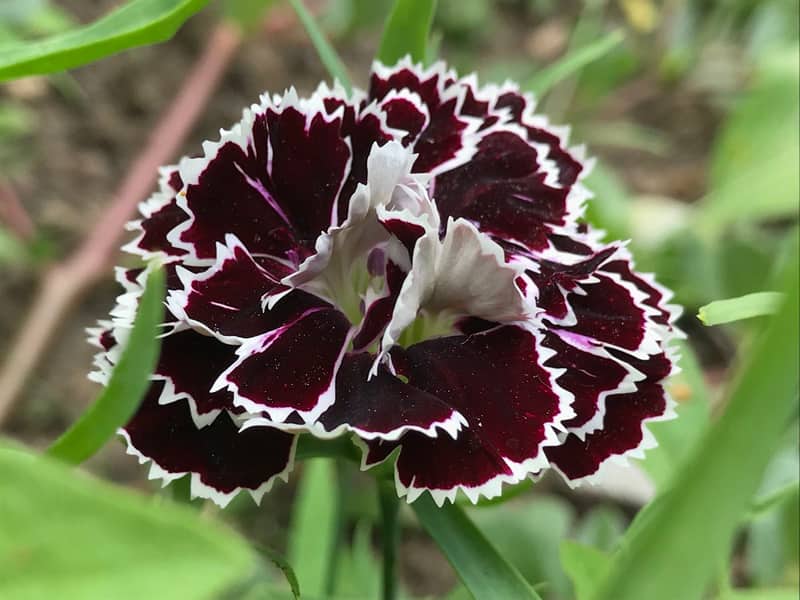
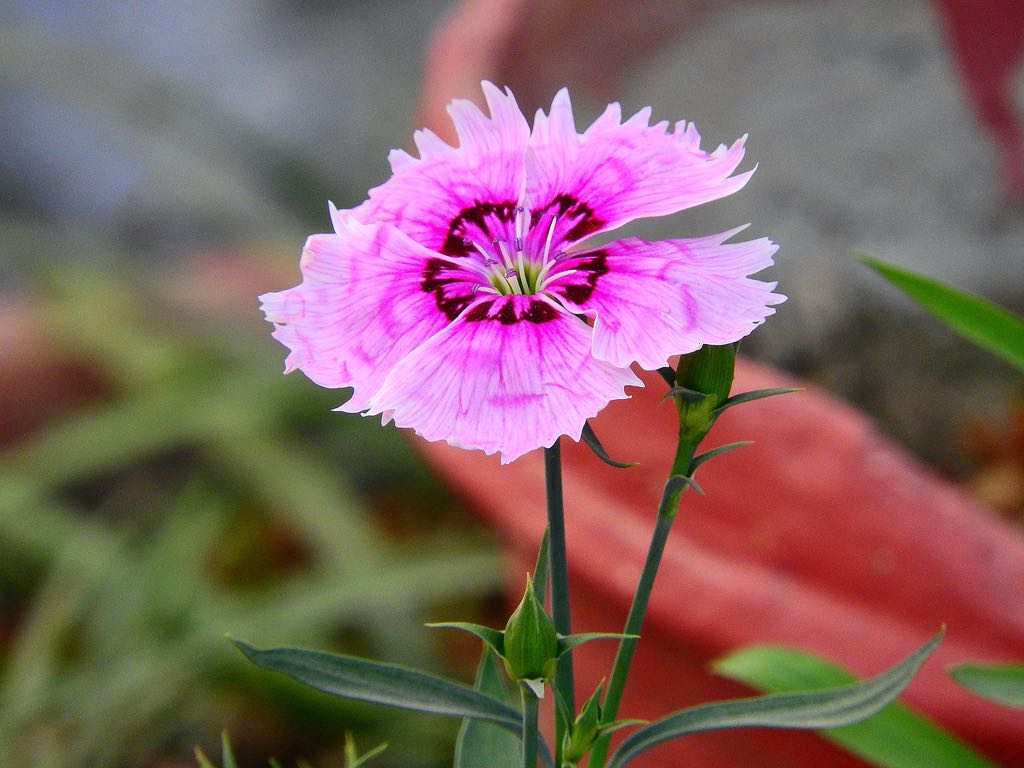
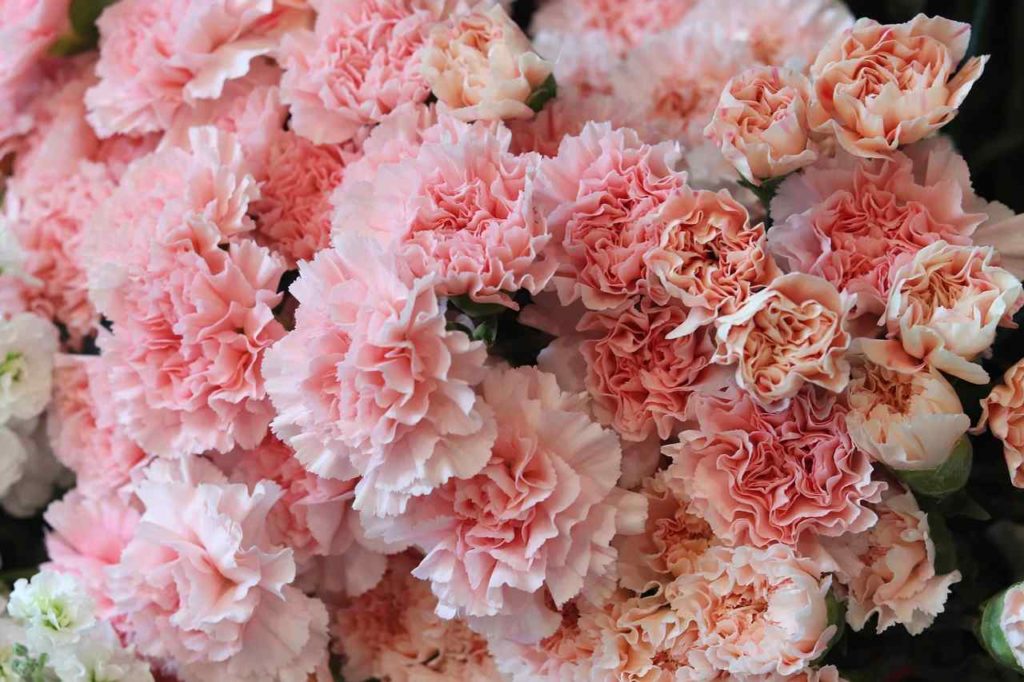
Leave a Reply